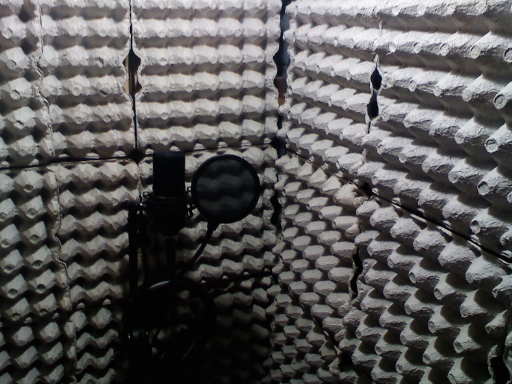Audio Skills: Making a recording
While we discussed this briefly in class, I wanted to outline some of the very general points that I made regarding how to make sure that the recordings that you are making are reasonably clear:
- Microphone Placement: In terms of the placement of the microphone, the greater the distance from the sound source, the more likely that sound is going to be muffled by ambient noises in the environment. Furthermore, most cellphones and audio recorders have mics designed to capture sound across a wide space, so they don’t target a particular soure. At the same time, if you are too close to the sound source, the signal will be too loud and will overwhelm the amplitude of signal that the mic will record and clipping will occur (which sounds like the signal being fuzzed out.) The usual distance you should try to keep the microphone from the sound source, say somebody you’re speaking with, is about 1 foot (or thirty centimeters.) This isn’t a hard an fast rule, because it depends on the space in which you’re recording, how loud that space is, so you should always test if you can before you begin recording.
- Reduce Ambient Noise The second issue that you should always keep in mind is ambient and background noise. Humans are very effective and efficient at filtering out noise from their environment. Microphones simply record. So, what you might believe is a very quiet local might be filled with background noises (like air conditioners, or sound bouncing off of the walls.) For this reason, there are a few things that you should keep in mind when you are recording:
- First, and perhaps the most obvious, is that you should strive to keep down the ambient noise. Recording in places like coffee shops, hallways, etc. are to be avoided unless you are using a microphone that can focus on the sound source. Otherwise, you will end up with lot of chatter and noise.
- Second, try to record in environments that have soft surfaces. So, this classroom would be a bad place to record because it’s all hard surfaces. You will want a room with carpeting. If there are windows, it’s preferable that the curtains are pulled, but not necessary. This is because hard surfaces reflect noise and this leads to noise being picked up on the recording. Studios are very absorbant of ambient noise, this is why the sound produced in them is so clear. If you’re recording yourself alone, you can put a blanket over your head to insulate you from the environmental noise.
- Third, don’t forget that the equipment you are using could produce noise itself. For example, you are recording an interview with somebody on your laptop. This could result in the cooling fan from the computer being caught on the microphone, or the sound of you typing notes. Both are distracting to the listener.
-

Home studio that uses egg cartons to reduce noise…not that you’d need to go that far.
Finally, if you’re recording outside, be aware of the noise that comes from wind and air currents. We won’t hear them, but they do effect what is recorded.
